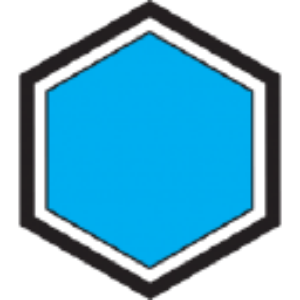Two GlycoMimetics Posters at 63rd ASH Annual Meeting Highlight Potential of GMI-1359, a Dual Antagonist of CXCR4 and E-selectin
-
Preclinical studies were conducted at the
University of Texas MD Anderson Cancer Center - Data support novel therapeutic approach for patients with acute myeloid leukemia (AML) with FLT-3 ITD mutations
“Both posters demonstrate the potential value of blocking extrinsic factors of AML drug resistance in the bone marrow microenvironment with our dual-function antagonist GMI-1359. The work done at MD Anderson specifically demonstrates that by disrupting tumor-stromal interactions within the bone marrow, as measured by increased in vivo cell motility, GMI-1359 significantly enhances/restores the antileukemic activity of venetoclax/HMA and FLT3 inhibitors. Importantly, GMI-1359 also protects the normal hematopoietic stem cells and the bone marrow compartment from detrimental toxic side effects from chemotherapy as experienced with venetoclax/HMA treatments. These data support our belief that targeting extrinsic factors of chemoresistance with GMI-1359 can increase not only the efficacy but also the safety of conventional AML therapy,” said
The first poster (#1171) — presented
The second poster (#3348), presented today contains data demonstrating that in a patient derived xenograft model, both uproleselan and GMI-1359 increased the efficacy and extended median survival time in engrafted mice treated with venetoclax/HMA from 74 days to 90 and 91 days, respectively. In these studies, the inclusion of uproleselan or GMI-1359 in combination with venetoclax/HMA further significantly decreased both the leukemic blast and leukemic stem cell burden beyond that obtained with venetoclax/HMA alone. Coincident with these studies data in the poster also demonstrate through intravital microscopy that GMI-1359 reduced adhesion and stimulated mobility of leukemic stem cells within the bone marrow microenvironment suggesting the disruption of both the E-selectin/E-selectin ligand and the CXCR4/CXCL12 axes. In addition, the poster includes evidence that uproleselan and GMI-1359 preserve the nontumor bone marrow component cells from venetoclax/HMA detrimental effects through the upregulation of survival signaling cascades, while protecting the hematopoietic stem cells and the bone marrow components from this treatment.
The accepted abstracts are available online through the ASH meeting website. Both posters are available on the Company’s website, www.glycomimetics.com under the PUBLICATIONS tab.
About GMI-1359
GMI-1359 is designed to simultaneously inhibit both E-selectin and CXCR4 — both adhesion molecules involved in tumor trafficking and metastatic spread. Preclinical studies indicate that targeting both E-selectin and CXCR4 with a single compound could improve efficacy in the treatment of cancers that involve the bone marrow such as AML and multiple myeloma or in solid tumors that metastasize to the bone, such as prostate cancer and breast cancer, as well as in osteosarcoma, a rare pediatric tumor. GMI-1359 has received Orphan Drug Designation and Rare Pediatric Disease Designation from the FDA for the treatment of osteosarcoma, a rare cancer affecting about 900 adolescents a year in
About Uproleselan
Discovered and developed by
About
Forward-Looking Statements
This press release contains forward-looking statements, including those relating to the planned or potential clinical development and commercialization of the Company’s product candidates, as well as the presentation of data from preclinical studies and clinical trials, and the potential benefits and impact of the Company’s drug candidates. Actual results may differ materially from those described in these forward-looking statements. For a further description of the risks associated with these statements, as well as other risks facing
View source version on businesswire.com: https://www.businesswire.com/news/home/20211213005560/en/
Investor:
Phone: 650-888-0902
Email: sannes@annesassociates.com
Media:
Phone: 410-299-3310
Email: jamielacey@presscommpr.com
Source:







